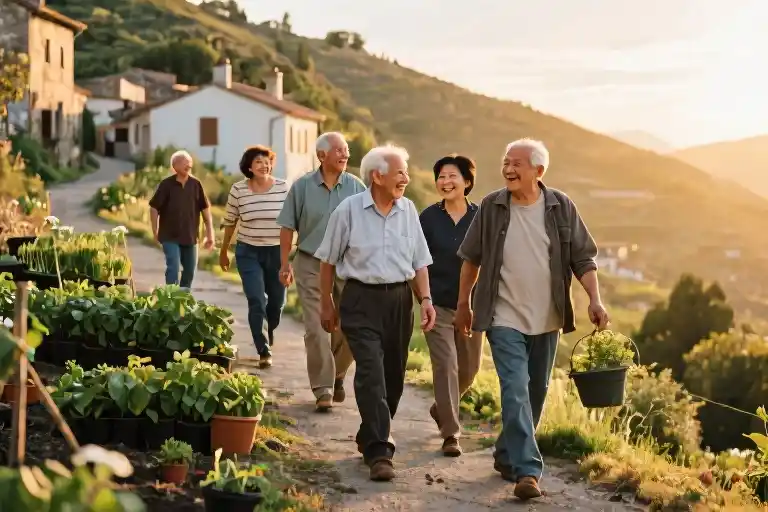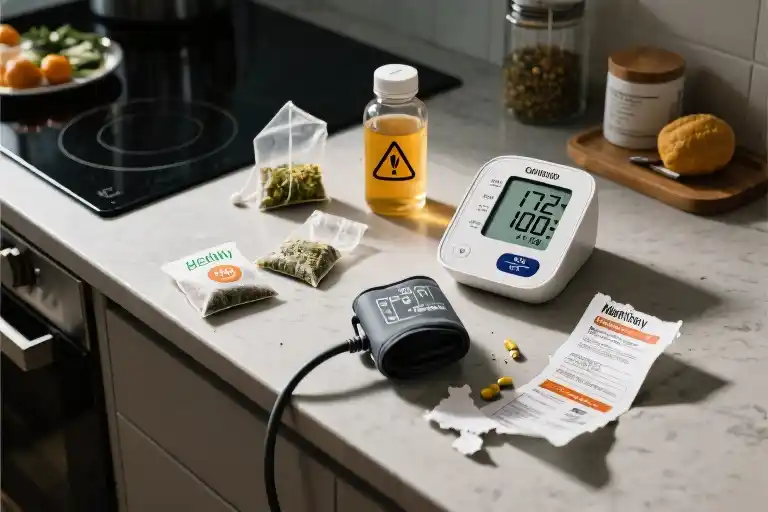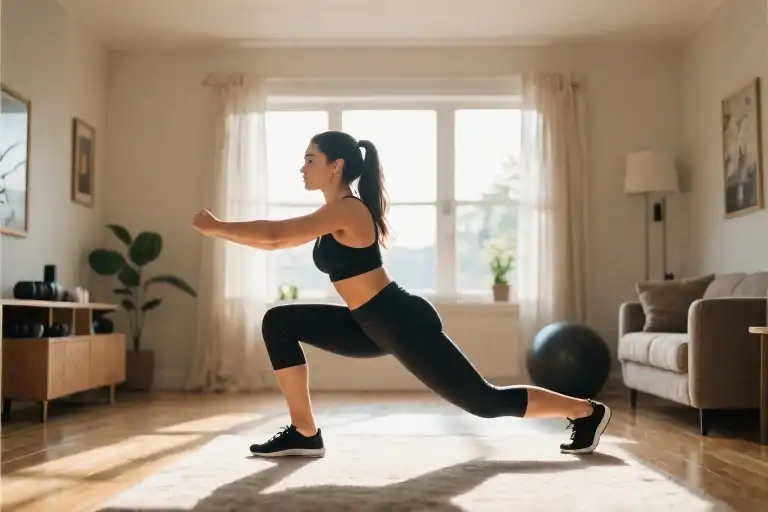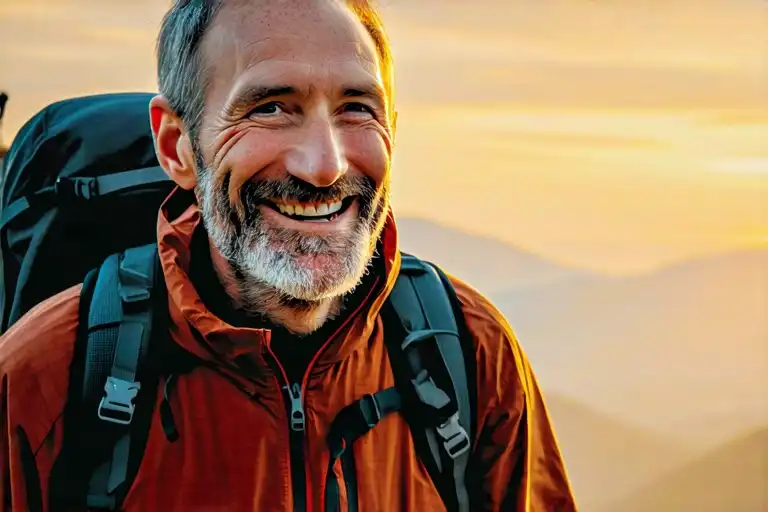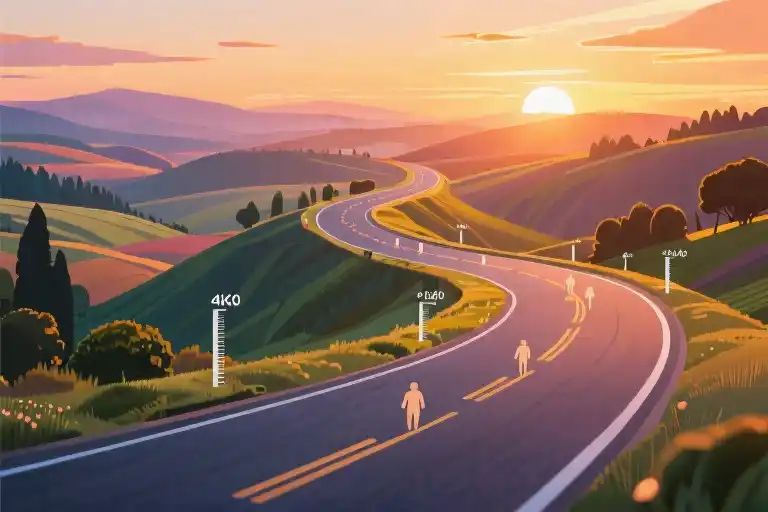The gym membership card collecting dust in your wallet tells a familiar story. Industry data shows over 67% of fitness club memberships go unused after the first three months, yet we keep buying them like lottery tickets to health. Meanwhile, in Okinawa’s mountain villages and Sardinia’s shepherd trails, centenarians tend their gardens and walk miles daily without a single dumbbell in sight.
This glaring contradiction begs the question: Have we fundamentally misunderstood what true movement looks like? The world’s Blue Zones—pockets of extraordinary longevity—reveal an uncomfortable truth. Their residents aren’t sweating through spin classes or counting macros. Instead, they’ve mastered the art of natural movement, weaving physical activity seamlessly into daily life through gardening, walking errands, and hand-tool housework.
Research from National Geographic’s Blue Zones Project shows these populations average 150+ minutes of weekly activity without “exercise” ever appearing on their to-do lists. Compare this to our modern dilemma: Where 100 years ago only 10% of jobs required prolonged sitting, today’s knowledge workers spend 90% of waking hours sedentary—a physiological mismatch our Stone Age genes can’t comprehend.
The secret isn’t about working out more, but rather rediscovering how to move like humans evolved to. It’s the difference between forcing yourself on a treadmill versus letting your environment guide you into motion naturally. As Blue Zones founder Dan Buettner observes, “Longevity happens by accident—it’s what happens when the right behaviors are made inevitable by your surroundings.”
This revelation changes everything. Suddenly, health isn’t confined to gym walls or measured in reps. It’s in how you arrange your kitchen to encourage stretching, design walking routes to the mailbox, or choose a rake over a leaf blower. The best fitness equipment was never manufactured—it’s woven into the fabric of ordinary life, waiting to be rediscovered.
The Century-Long Fitness Deception
That gym membership card collecting dust in your wallet? It’s not a personal failing—it’s by design. The modern fitness industry has sold us a myth that health requires specialized equipment and dedicated workout spaces. But the truth is far more interesting, and it begins with a trip back to 19th-century military training grounds.
From Barracks to Boutique Studios
The origins of today’s weight machines trace back to Swedish physician Gustav Zander’s 1857 medical gymnastics apparatus. These contraptions weren’t created for public health, but rather as rehabilitation tools for injured soldiers. The transition to civilian life came through clever marketing—when gyms realized they could monetize the human body’s need for movement.
Consider these eye-opening comparisons:
- Primitive movement patterns: Our ancestors naturally incorporated squatting (for gathering), pushing/pulling (for hunting), and carrying (for transporting) into daily life
- Modern gym equivalents: Leg press machines replace squatting motions, while seated cable rows simulate pulling actions our bodies evolved to perform standing
The Physiology of Natural Movement
Exercise physiologists now recognize crucial differences between isolated gym exercises and organic, full-body movements:
| Aspect | Gym Workouts | Natural Movement |
|---|---|---|
| Muscle Engagement | Isolated muscle groups | Integrated kinetic chains |
| Movement Patterns | Linear, repetitive motions | Multi-directional variability |
| Metabolic Impact | Short bursts of intensity | Sustained low-level activation |
| Cognitive Component | Often mindless repetition | Requires spatial awareness |
Dr. Katy Bowman, biomechanist and author of Move Your DNA, explains: “The human body evolved to solve movement problems—not to repeat abstracted motions divorced from functional purpose. When we separate ‘exercise’ from living, we miss thousands of daily movement opportunities.”
The Convenience Trap
Modern fitness culture emerged alongside labor-saving technologies that created an artificial movement deficit. Consider this paradox:
- We drive cars to save time… then spend that saved time on treadmills
- We install elevators… then seek out stair-climbing machines
- We buy food processors… then pay for arm-toning classes
Blue Zones residents demonstrate that longevity isn’t about compensating for sedentary lifestyles, but rather designing lifestyles that make movement unavoidable. Their secret? What researchers call “incidental physical activity”—the kind that happens when your environment demands it.
Rethinking Movement Economics
The gym model operates on a flawed premise—that we can “bank” health through intense 60-minute sessions. Emerging research on non-exercise activity thermogenesis (NEAT) proves otherwise:
- A 2018 Mayo Clinic study found NEAT accounts for 15-50% of daily calorie expenditure
- Blue Zones residents accumulate 5-10 times more NEAT than typical office workers
- Just 2 minutes of walking per hour can offset the mortality risk of prolonged sitting
As we’ll explore in the next chapter, the world’s longest-lived populations never needed gyms because they mastered the art of weaving movement into life’s fabric. Their homes, communities, and daily rituals created constant gentle demands on their bodies—something no elliptical machine can replicate.
The Unconscious Movement Rules of Longevity Hotspots
While gyms sell memberships with promises of sculpted abs and marathon-ready stamina, the world’s healthiest centenarians have never set foot on a treadmill. Their secret? Environments that turn daily living into an ongoing natural movement practice.
Sardinian Shepherds: Masters of Mountain Mobility
In Sardinia’s rugged highlands, shepherds routinely cover 8-12 miles daily tending flocks – not as exercise, but as life. Their secret lies in three movement principles:
- Terrain Variety: Uneven mountain paths engage stabilizing muscles modern shoes cushion us from
- Pacing Rhythm: Slow, sustained walking matches the body’s fat-burning sweet spot
- Purpose Integration: Movement isn’t segmented into “workout time” but woven into livelihood
Researchers found these shepherds maintain VO2 max levels comparable to athletes 50 years younger. Their lesson? Consistent low-intensity movement outperforms sporadic gym sessions.
Okinawan Gardens: Vertical Fitness Systems
Okinawa’s elders showcase how micro-movements accumulate into macro health benefits. Their traditional “yanbaru” gardens:
- Three-Dimensional Harvesting: Reaching (overhead mobility), squatting (hip flexibility), and kneeling (core engagement) replace gym machines
- Daily Maintenance Rituals: 20 minutes watering becomes a balance challenge on stone paths
- Seasonal Variability: Planting vs. harvesting cycles alter movement patterns naturally
A 2022 study in The Journals of Gerontology found Okinawan gardeners retain grip strength and spinal mobility decades longer than urban counterparts. Their dirt-covered hands prove fitness grows best when rooted in purpose.
The Hidden Physics of Everyday Motion
Blue Zones reveal movement quality matters more than quantity:
| Movement Type | Modern Equivalent | Calorie Advantage |
|---|---|---|
| Hand-washing clothes | Washing machine | +85 kcal/day |
| Walking to market | Online delivery | +120 kcal/day |
| Manual food prep | Food processor | +65 kcal/day |
These “movement snacks” add up to 30% higher daily energy expenditure without “exercise.” The key is designing environments that make motion unavoidable – like placing tools just out of reach or using stairs as primary circulation.
Transplanting Ancient Wisdom to Modern Life
You needn’t become a shepherd to benefit. Try these adaptations:
- Commute Hack: Park in the farthest space (adds 500-1,000 steps daily)
- Office Reset: Replace desk chairs with balance balls 2 hours/day
- Home Edit: Store frequently used items at varying heights (squat for pots, tiptoe for spices)
As Blue Zones researcher Dan Buettner notes: “Longevity isn’t about adding years to life, but life to years – through movements that feel like living, not training.”
The Physiological Prison of the Modern Office
Your ergonomic chair might be the most dangerous piece of furniture in your home. While marketed as a solution to back pain, these ‘comfortable’ thrones systematically eliminate micro-movements our ancestors took for granted. Research from the American Journal of Epidemiology reveals office workers now average just 500-1,000 steps daily – less than what Blue Zones centenarians accomplish before breakfast.
The Sedentary Deception of Ergonomic Design
Modern ergonomics commits an ironic betrayal of human biology. By perfectly contouring to our bodies:
- Lumbar support replaces natural core engagement
- Swivel mechanisms prevent standing/twisting motions
- Armrests discourage the arm-swinging gait of natural walking
A Mayo Clinic study found that even fidgeting burns 350+ extra calories daily. Yet today’s ‘optimal’ workstation design eliminates these spontaneous movements entirely.
Elevator Culture: Staircase Extinction
Skyscrapers symbolize progress, but their elevator systems represent evolutionary regression. Consider:
- 70% of office workers take elevators for ≤3 floor trips (Journal of Environmental Psychology)
- Staircase use dropped 83% since 1950s (National Institutes of Health)
- Just 2 minutes of stair climbing daily reduces cardiovascular risk by 18% (British Medical Journal)
We’ve literally engineered movement out of vertical transportation. In Blue Zones like Sardinia, mountainous terrain ensures elders naturally climb the equivalent of 30 flights weekly through daily errands.
The Keyboard Trap
Digital efficiency created new physical costs:
- Typing replaces handwriting’s wrist/arm motions
- Touchscreens eliminate fine motor skills
- Email eliminates walking to colleagues’ desks
NASA research shows astronauts lose 1-2% bone density monthly in zero gravity. Office workers lose bone mass at comparable rates due to weightlessness-like inactivity (Osteoporosis International).
Reclaiming Movement
Simple countermeasures:
- Replace chair with stability ball 1hr/day
- Set ‘walking reminders’ every 25 minutes
- Use restroom on alternate floors
- Hand-deliver messages instead of emailing
- Conduct ‘walking meetings’ for 1:1 discussions
As Blue Zones demonstrate, longevity isn’t about grueling workouts – it’s about reintegrating movement into life’s fabric. Your office might feel like a physiological prison, but with small tweaks, you can turn it into a movement sanctuary.
Urban Survivalist’s Movement Transplant Guide
Rethinking Your Daily Pathways
The modern urban environment has been ruthlessly optimized for efficiency – straight hallways, elevators positioned next to stairwells, parking spots directly facing building entrances. This engineering perfection comes at a hidden cost: the systematic elimination of natural movement opportunities. Blue Zones communities teach us that longevity thrives in environments with purposeful inefficiencies.
Movement-Forward Space Redesign Principles:
- The Serpentine Home Layout
- Replace open-concept designs with segmented living spaces
- Position frequently used items (coffee makers, charging stations) away from primary seating areas
- Example: Okinawan homes traditionally separate cooking, eating and resting areas
- The 10-Step Rule
- Any essential daily item (keys, wallet, lunchbox) should require at least 10 steps to retrieve
- Store cleaning supplies on different floors from where they’re used
- Data shows this adds ~800-1,200 steps daily without conscious effort
- Vertical Challenges
- Convert underused staircases into functional spaces (reading nooks, plant stations)
- Place laundry facilities in basements even when main-floor installation is possible
- Studies indicate stair users have 15% better cardiovascular markers
The Intentional Tool Downgrade Movement
Our quest for labor-saving devices has created what anthropologists call “movement deserts.” The science behind manual tool use reveals surprising benefits:
Case Study: Broom vs. Vacuum
- Caloric Expenditure: 30 minutes of sweeping burns 120-150 calories vs. 60-80 for vacuuming
- Range of Motion: Sweeping engages 12 major muscle groups vs. 7 for pushing a vacuum
- Postural Benefits: The twisting motion improves spinal mobility (Journal of Ergonomics, 2022)
Practical Implementations:
- Kitchen: Whisk instead of electric mixer
- Yard Care: Push mower over riding mower
- Office: Manual pencil sharpener on another floor
Micro-Movement Integration Techniques
For those trapped in small urban apartments, these space-efficient solutions replicate Blue Zones activity patterns:
- Balcony Gardening
- Even 2×4 foot spaces can grow mobility-boosting crops like tomatoes (requires daily tending)
- Container gardening necessitates squatting and reaching motions
- The Nomadic Workspace
- Rotate between 3-4 work stations daily (standing desk, kitchen counter, balcony table)
- Each transition creates natural walking breaks
- Social Movement Hacks
- Implement “walking meetings” for groups under 4 people
- Replace coffee dates with “errand walks” (combining socializing with practical tasks)
“The healthiest environments don’t require discipline – they make movement unavoidable.” This Blue Zones principle transforms urban living when we stop fighting our sedentary infrastructure and start redesigning our immediate surroundings. Your apartment or office might not overlook Sardinian pastures, but through intentional space manipulation, you can build your own longevity landscape one deliberate inconvenience at a time.
Movement Renaissance in the Digital Age
When Technology Meets Natural Movement
The irony of our times? The same devices blamed for sedentary lifestyles now hold keys to reviving natural movement. While smartphones and AR headsets often chain us to chairs, innovators are flipping the script—transforming screens into portals for physical engagement.
Augmented Reality: The Unexpected Fitness Ally
Pokémon GO’s 2016 explosion revealed an untapped truth: people will walk miles when digital rewards make movement playful. The game’s users averaged 4.6 extra daily miles—equivalent to burning 1,800 weekly calories. Today’s AR advancements take this further:
- Mirrorworld Workouts: Apps like Zombies, Run! overlay post-apocalyptic narratives onto neighborhood walks, turning sidewalks into survival missions
- Virtual Gardening: Plantopia AR lets urbanites tend digital gardens that require real-world movement to ‘water’ and ‘harvest’
- Architecture Games: Monument Valley clones encourage users to physically circle buildings to solve perspective puzzles
These solutions cleverly exploit our dopamine triggers while satisfying primal movement needs. As Stanford researchers found, AR users experience 28% less perceived exertion during physical activity.
Community Motion Economies
Forward-thinking neighborhoods are applying Blue Zones principles through technology:
- Step-Based Local Currency (Bristol, UK)
- Residents earn ‘Bristol Pounds’ by hitting daily step goals
- Redeemable at farmers’ markets and independent shops
- Result: 63% increased foot traffic in participating districts
- Movement Time Banking (Portland, Oregon)
- Walk a neighbor’s dog → Earn credits for yoga classes
- Bike deliveries → Trade for homemade meals
- Creates self-sustaining active communities
- Public Transport Gamification (Singapore)
- MRT stations award ‘Active Points’ for stair usage
- Leaderboards foster friendly competition
- Reduced elevator congestion by 41%
Non-Wearable Tracking Revolution
For those resistant to fitness trackers, discreet alternatives are emerging:
| Tech | How It Works | Blue Zones Parallel |
|---|---|---|
| Smart Carpets | Pressure sensors map foot traffic patterns | Okinawan tatami room footwork |
| Chair Sensors | Alerts after 30min sitting | Sardinian shepherds’ rock perches |
| Refrigerator Cameras | Tracks kitchen activity frequency | Ikarian outdoor cooking culture |
The Hybrid Future
The sweet spot? Blending ancestral wisdom with digital nudges:
- Morning: AR sunrise yoga in your living room (with real stretching)
- Commute: Audio-guided ‘storywalks’ that alter routes daily
- Work: Desk sensors that unlock screen time through micro-movements
- Evening: Neighborhood AR treasure hunts replacing scrolling
As MIT Technology Review notes: “The next fitness breakthrough won’t be a better treadmill, but technologies that make movement inevitable.” By designing digital experiences that demand physical engagement, we’re not abandoning technology—we’re finally making it work for our bodies.
Pro Tip: Try combining analog and digital—listen to a walking meditation app while tending real plants. You’ll get screen-free movement with guided intentionality.
Transforming Your Daily Movement: From Sedentary to Naturally Active
Your Before-and-After Movement Snapshot
Let’s visualize a typical day before and after embracing natural movement principles:
Before (Modern Sedentary Day)
- 🪑 9 hours seated at workstation (with 3 bathroom breaks)
- 🚗 45 minutes commuting in car (door-to-door parking)
- 🛒 Grocery delivery eliminating market walks
- 🏠 Evening streaming with smart home voice controls
Total movement: ~2,300 steps (mostly indoor shuffling)
After (Blue Zones-Inspired Day)
- 🚶 15-minute morning “walking meditation” to café
- 🖨️ Printer relocated to shared space (+12 mini-walks/day)
- 🌱 Lunchtime gardening at community plot
- 🛒 Walking errands with wheeled grocery cart
- 🧹 Hand-sweeping patio instead of Roomba use
Total movement: ~8,700 steps (effortlessly achieved)
This isn’t about adding workout sessions—it’s about rediscovering the movement opportunities we’ve designed out of modern life.
Your Personal Environment Assessment
Score your current lifestyle (1=Never, 5=Always):
- Workstation mobility: I change positions ≥3x/hour
- Convenience resistance: I choose manual over automated options
- Destination design: Daily errands require walking portions
- Social movement: Meetups involve walking/activity
- Micro-moments: I utilize waiting/watching time for stretching
Scoring:
- 15+ points: Natural movement ninja
- 10-14: On the right path
- Below 10: Your environment needs movement therapy
The Natural Movement Manifesto
Join thousands who’ve pledged to:
✊ Design for inconvenience (stairs over elevators, distant parking)
✊ Reclaim domestic movement (hand-washing dishes, line-drying clothes)
✊ Socialize actively (walking meetings, dance breaks)
✊ Celebrate micro-movements (calf raises while brushing teeth)
“The chair is a recent invention—our bodies still expect us to move like farmers.” — Dan Buettner, Blue Zones researcher
Your Next Right Step
Choose one change this week:
- 📱 Set phone reminders to stand/stretch every 30 minutes
- 🚶 Map a 15-minute walking loop from your front door
- 🪑 Replace one chair with a standing perch (kitchen counter works)
- 🌿 Plant something requiring daily care (herbs, sprouts)
Remember: The healthiest movements aren’t measured in reps or miles, but in lives fully lived. Your great-grandparents knew this secret—now it’s your turn to reclaim it.

